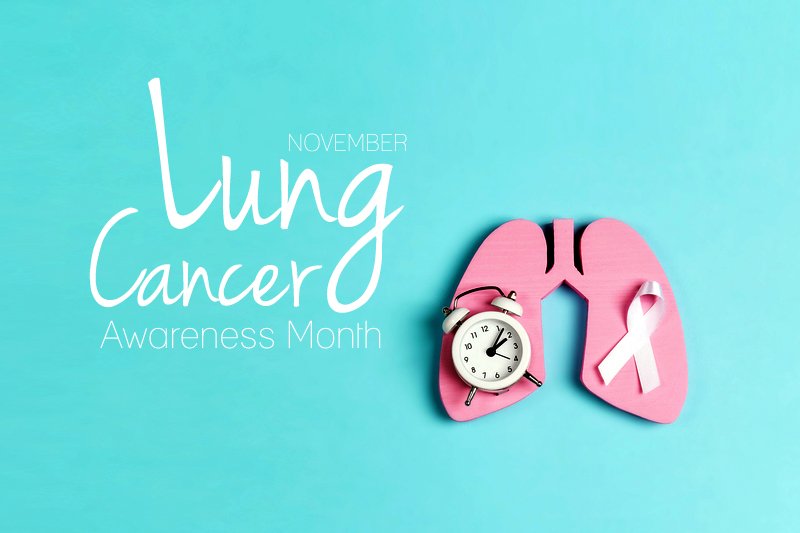LUNG Cancer Awareness Month

[vc_row][vc_column width=”2/3″][vc_column_text]Lung cancer, also known as lung carcinoma, is a malignant lung tumor characterized by uncontrolled cell growth in the tissues of the lung. It is the leading cause of death from cancer in the United States, with more people dying from lung cancer than from colon, breast and prostate cancers combined.
Despite the severe statistics on lung cancer, new findings from scientific cancer research have recently revealed some hopeful news. For those fighting lung cancer in the early stages of the disease, survival rates are noticeably rising due to improved treatments. The two-year survival rate for people treated with either surgery or radiation therapy rose from 61 percent in 2000 to 70 percent in 2009 — corresponding to a 3.5 percent annual decrease in death from lung cancer.
Treatments for lung cancer can include surgery, radiation, chemotherapy and immunotherapy, or a combination of these. Until recently, the standard approach for lung cancer surgery was an open procedure called a thoracotomy which requires a large incision in the chest. Today, many people with lung cancer are able to have minimally invasive surgery using video-assisted technology and robotics which allows greater magnification and more precision. Further, using the most advanced technologies, powerful doses of radiation can now be delivered with exquisite precision. In comparison with more conventional approaches, this can reduce the number of sessions required for radiation treatment while also limiting the risk of side effects. New advances in chemotherapy include oral chemotherapy given through a pill with reduced side effects.
Most lung cancers do not cause any symptoms until they have spread and are in advanced stages. When lung cancer does cause signs in its early stages, they may vary from person to person, but commonly can include:
- A cough that is persistent or worsens
- Coughing up blood or rust-colored sputum (spit or phlegm)
- Chest pain that is often worse with deep breathing, coughing, or laughing
- Hoarseness
- Loss of appetite
- Unexplained weight loss
- Shortness of breath
- Feeling tired or weak
- Infections such as bronchitis and pneumonia that don’t go away or keep coming back
- New onset of wheezing
Although many of the above symptoms can also indicate other types of cancers, it is crucial to see your doctor if you notice any of the above warning signs.
The impact of funding scientific cancer research is that more and more people are being cured of lung cancer, and studies optimistically suggest that survival rates will continue to improve over time.
By making a donation to National Cancer Center to support scientific cancer research, you can be part of the positive trends in rising cancer survival rates, and ultimately, in helping to find a cure.[/vc_column_text][/vc_column][vc_column width=”1/3″][vc_single_image source=”external_link” custom_src=”https://nationalcancercenter.org/wp/wp-content/uploads/2019/11/dreamstime_s_113823453.jpg”][vc_single_image source=”external_link” custom_src=”https://nationalcancercenter.org/wp/wp-content/uploads/2019/11/dreamstime_s_78752210.jpg”][vc_single_image source=”external_link” custom_src=”https://nationalcancercenter.org/wp/wp-content/uploads/2019/11/dreamstime_s_130900060.jpg”][/vc_column][/vc_row]


